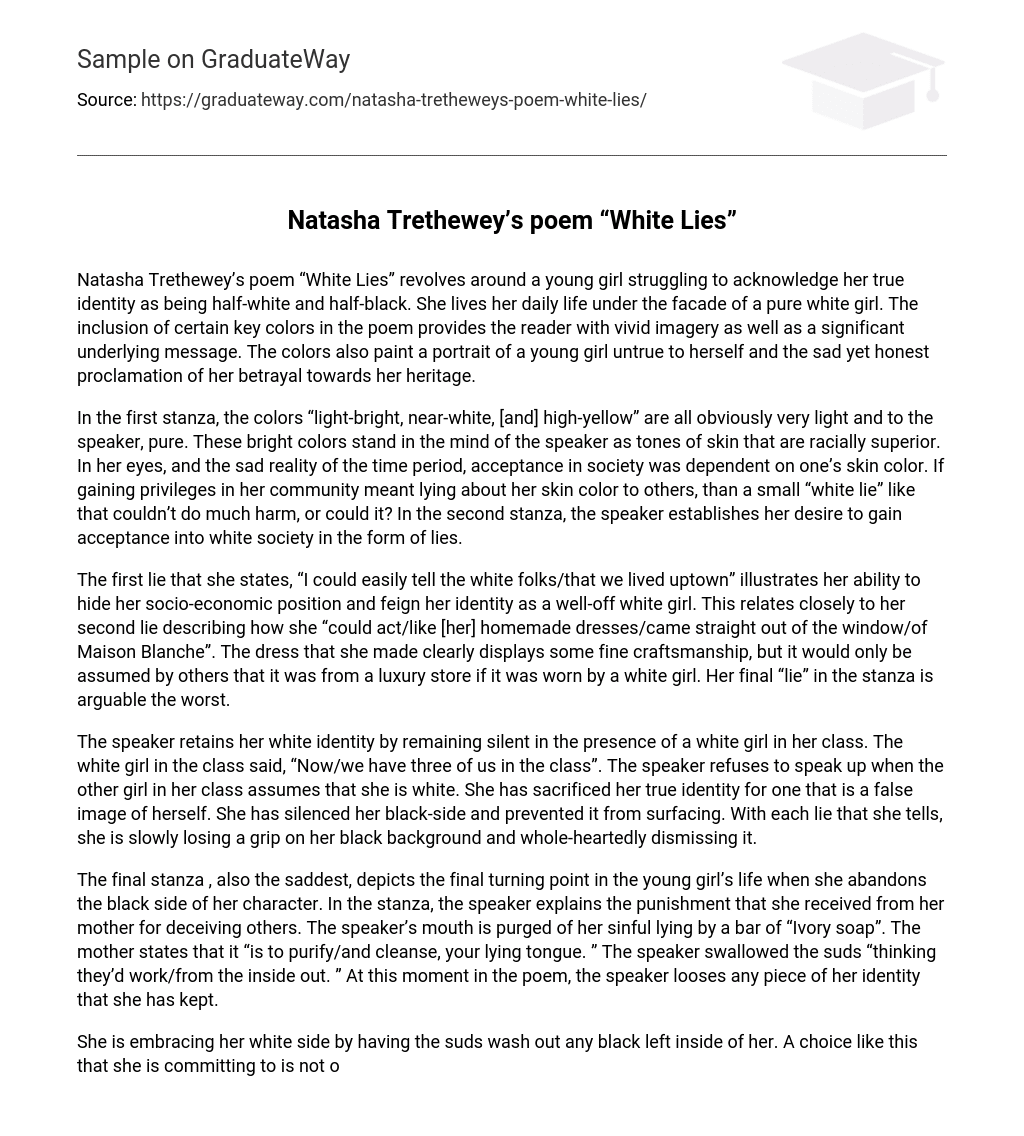Natasha Trethewey’s poem “White Lies” revolves around a young girl struggling to acknowledge her true identity as being half-white and half-black. She lives her daily life under the facade of a pure white girl. The inclusion of certain key colors in the poem provides the reader with vivid imagery as well as a significant underlying message. The colors also paint a portrait of a young girl untrue to herself and the sad yet honest proclamation of her betrayal towards her heritage.
In the first stanza, the colors “light-bright, near-white, [and] high-yellow” are all obviously very light and to the speaker, pure. These bright colors stand in the mind of the speaker as tones of skin that are racially superior. In her eyes, and the sad reality of the time period, acceptance in society was dependent on one’s skin color. If gaining privileges in her community meant lying about her skin color to others, than a small “white lie” like that couldn’t do much harm, or could it? In the second stanza, the speaker establishes her desire to gain acceptance into white society in the form of lies.
The first lie that she states, “I could easily tell the white folks/that we lived uptown” illustrates her ability to hide her socio-economic position and feign her identity as a well-off white girl. This relates closely to her second lie describing how she “could act/like [her] homemade dresses/came straight out of the window/of Maison Blanche”. The dress that she made clearly displays some fine craftsmanship, but it would only be assumed by others that it was from a luxury store if it was worn by a white girl. Her final “lie” in the stanza is arguable the worst.
The speaker retains her white identity by remaining silent in the presence of a white girl in her class. The white girl in the class said, “Now/we have three of us in the class”. The speaker refuses to speak up when the other girl in her class assumes that she is white. She has sacrificed her true identity for one that is a false image of herself. She has silenced her black-side and prevented it from surfacing. With each lie that she tells, she is slowly losing a grip on her black background and whole-heartedly dismissing it.
The final stanza , also the saddest, depicts the final turning point in the young girl’s life when she abandons the black side of her character. In the stanza, the speaker explains the punishment that she received from her mother for deceiving others. The speaker’s mouth is purged of her sinful lying by a bar of “Ivory soap”. The mother states that it “is to purify/and cleanse, your lying tongue. ” The speaker swallowed the suds “thinking they’d work/from the inside out. ” At this moment in the poem, the speaker looses any piece of her identity that she has kept.
She is embracing her white side by having the suds wash out any black left inside of her. A choice like this that she is committing to is not one that can be easily reversed. Although contrasting colors, her white and black sides could have provided her with a sense of balance unique to her identity. This is forfeited though when acceptance into the white community became an overpowering desire in her life. The “white lies” are not the lies Trethewey told throughout the poem but rather, the “white lies” she created within herself.





